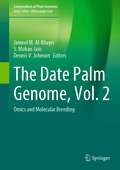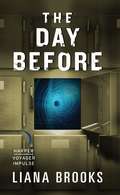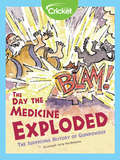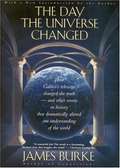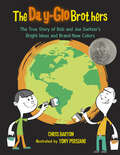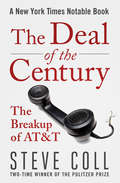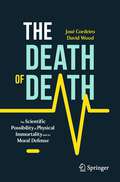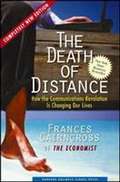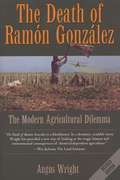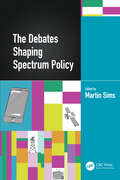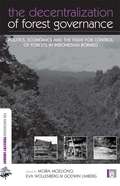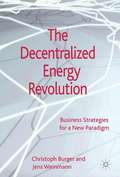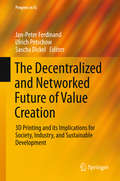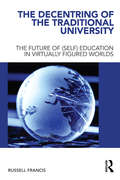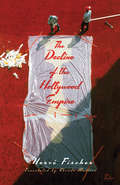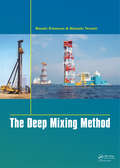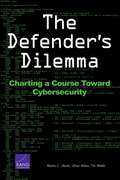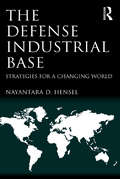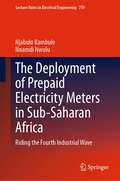- Table View
- List View
The Date Palm Genome, Vol. 2: Omics and Molecular Breeding (Compendium of Plant Genomes)
by S. Mohan Jain Jameel M. Al-Khayri Dennis V. JohnsonThis book is the first comprehensive assemblage of contemporary knowledge relevant to genomics and other omics in date palm. Volume 2 consists of 11 chapters. Part I, Nutritional and Pharmaceuticals Properties, covers the utilization of date palm as an ingredient of various food products, a source of bioactive compounds and the production of nanomaterials. Part II, Omics Technologies, addresses omics resources, proteomics and metabolomics. Part III, Molecular Breeding and Genome Modification, focuses on genetic improvement technologies based on mutagenesis, quantitative traits loci and genome editing. Part IV, Genomics of Abiotic and Biotic Stress, covers metagenomics of beneficial microbes to enhance tolerance to abiotic stress and the various genomics advances as they apply to insect control. This volume represents the efforts of 34 international scientists from 12 countries and contains 65 figures and 19 tables to illustrate presented concepts. Volume 1 is published under the title: Phylogeny, Biodiversity and Mapping.
The Day Before
by Liana BrooksA body is found in the Alabama wilderness. The question is: Is it a human corpse ... or is it just a piece of discarded property? Agent Samantha Rose has been exiled to a backwater assignment for the Commonwealth Bureau of Investigation, a death knell for her career. But then Sam catches a break--a murder--that could give her the boost she needs to get her life back on track. There's a snag, though: the body is a clone, and technically that means it's not a homicide. And yet, something about the body raises questions, not only for her, but for coroner Linsey Mackenzie.The more they dig, the more they realize nothing about this case is what it seems ... and for Sam, nothing about Mac is what it seems, either.This case might be the way out for her, but that way could be in a bodybag.A thrilling new mystery from Liana Brooks, The Day Before will have you looking over your shoulder and questioning what it means to be human.
The Day Parliament Burned Down
by Caroline ShentonThis is the thrilling but largely unknown story of the day that the 800 year-old Houses of Parliament burnt down. Today it is a largely forgotten event, but in 1834 it was as shocking and significant to contemporaries as the death of Princess Diana was to us at the end of the 20th century. Out of the fire rose not just the new Houses of Parliament, but masterpieces by Turner and Dickens, the first Public Record Office and a new Metropolitan Fire Brigade. It is afascinating tale, never previously told in a full-length book. Written by the head of the Parliamentary Archives at Westminster, it will appeal to any readers interested in the Georgian and Victorianperiods, the history of London, and the story of Parliament.
The Day the Medicine Exploded
by Liz HuyckIn ancient China, an alchemist mixed an exploding medicine and accidentally invented gunpowder. Learn about the development of gunpowder and other explosives, like nitroglycerin and dynamite, in this fun comic.
The Day the Screens Went Blank: The Brand-new Comedy Adventure From The Author Of The Day The Screens Went Blank
by Danny WallaceA hilarious middle-grade road-trip adventure from bestselling author, comedian, and presenter Danny Wallace, with illustrations throughout from Gemma Correll. Perfect for fans of Liz Pichon and David Baddiel! When ten-year-old Stella wakes up to discover a world full of BLANK screens, her family, town, and in fact the whole world seems to have been thrown into chaos. And what about poor Grandma who is stranded at the other end of the country? Cue a rollicking madcap road trip, full of driving disasters and family fallouts, as they set off on a rescue mission. And along the way Stella and her family discover that being away from screens might not be the Worst Thing Ever, and even though they might not be able to rely on technology anymore, they can rely on each other instead.Also by Danny Wallace:Hamish and WorldStoppers Hamish and the Neverpeople Hamish and the Gravity Burp Hamish and the Baby Boom Hamish and the Monster Patrol Hamish and the Terrible Terrible Christmas
The Day the Universe Changed
by James Lee BurkeIn The Day the Universe Changed, James Burke examines eight periods in history when our view of the world shifted dramatically: in the eleventh century, when extraordinary discoveries were made by Spanish crusaders; in fourteenth-century Florence, where perspective in painting emerged; in the fifteenth century, when the advent of the printing press shook the foundations of an oral society; in the sixteenth century, when gunnery developments triggered the birth of modern science; in the early eighteenth century, when hot English summers brought on the Industrial Revolution; in the battlefield surgery stations of the French revolutionary armies, where people first became statistics; in the nineteenth century, when the discovery of dinosaur fossils led to the theory of evolution; and in the 1820s, when electrical experiments heralded the end of scientific certainty. Based on the popular television documentary series, The Day the Universe Changed is a bestselling history that challenges the reader to decide whether there is absolute knowledge to discover - or whether the universe is "ultimately what we say it is."
The Day-Glo Brothers: The True Story of Bob and Joe Switzer's Bright Ideas and Brand-New Colors
by Chris BartonA discovery that made the world a brighter place!Joe and Bob Switzer were very different brothers. Bob was a studious planner who wanted to grow up to be a doctor. Joe dreamed of making his fortune in show business and loved magic tricks and problem-solving. When an accident left Bob recovering in a darkened basement, the brothers began experimenting with ultraviolet light and fluorescent paints. Together they invented a whole new kind of color, one that glows with an extra-special intensity—Day-Glo.This cover reproduction is not printed with Day-Glo colors. The actual book, however, is printed using three Day-Glo colors: Saturn Yellow, Fire Orange, and Signal Green.
The Dazzle of the Digital: Unbundling India Online (Routledge Focus on Modern Subjects)
by Vivan Sharan Meghna BalThe Dazzle of the Digital is written in the context of digital technology’s inextricable link with progress and modernity in India, with the COVID pandemic in the backdrop. Digital technology such as smartphones and the internet exemplify the popular ideal of a modernity where the proliferation of data and information seamlessly translates into knowledge and value. The authors attempt to wrestle with this impulsive conflation of the digital with the modern, and argue that the former can sometimes retard progress rather than foster it. They provide examples from various spheres – ranging from public service delivery to private markets – to unpack the pitfalls of a blinkered view on modernity. The book presents an objective take on the potential of digital technology, written with the hope that it will prompt greater societal reflection on technology as a lever for advancement, at a time when the march of everything digital is inexorable.
The Deadly Lies (The Delingpole Mysteries #2)
by David C. DawsonSequel to FAPA Award-winning The Necessary DeathsThe Delingpole Mysteries: Book TwoDominic and Jonathan are on their romantic Spanish honeymoon, and things are perfect… except Dominic has kept a secret from his husband. He’s failed to tell Jonathan that he plans to meet his former lover, Bernhardt, who is speeding on his way from Germany to present Dominic with a mysterious gift. But Bernhardt is killed in a suspicious car accident. Shortly before he dies, he sends Dominic a bizarre text message that will take the newlyweds on a hair-raising adventure. Lies upon lies plunge Dominic and Jonathan into an internet crime that could destroy the lives of millions of people. What is the mysterious Charter Ninety-Nine group? And will their planned internet assault force Dominic to choose between the fate of the world and the life of his lover?
The Deal of the Century: The Breakup of AT&T
by Steve CollA New York Times–bestselling author&’s &“superbly reported&” account of the dismantling of the world&’s largest corporation (The Washington Post). Written by the two-time Pulitzer Prize–winning author of Ghost Wars and Private Empire, The Deal of the Century chronicles the decade-long war for control of AT&T. When the US Department of Justice brought an antitrust lawsuit against AT&T in 1974, the telecommunications giant held a monopoly on phone service throughout the country. Over the following decade, an army of lawyers, executives, politicians, and judges spent countless hours clashing over what amounted to the biggest corporate breakup in American history. From boardroom to courtroom, Steve Coll untangles the myriad threads of this complex and critical case and gives readers &“an excellent behind-the-scenes look&” at the human drama involved in the remaking of an entire industry (The Philadelphia Inquirer). Hailed by the New York Times Book Review as &“rich, intricate and convincing,&” The Deal of the Century is the definitive narrative of a momentous turning point in the way America does business.
The Death of Death: The Scientific Possibility of Physical Immortality and its Moral Defense (Copernicus Books)
by David Wood José CordeiroIs death inevitable? Until now, the history of mankind has been marked by this fatal fact. Religions, borders and progress are born from an ancient fear of death, comfort from this fear man often found only in religious paradigms. But according to José Luis Cordeiro and David Wood, the incontrovertible fact of death is no longer an absolute certainty - science and technology are preparing to tear down the final frontier: that of immortality.This accessible book provides insight into recent exponential advances in artificial intelligence, tissue regeneration, stem cell treatment, organ printing, cryopreservation, and genetic therapies that, for the first time in human history, offer a realistic chance to solve the problem of the aging of the human body. In this book, Cordeiro and Wood not only present all the major developments, initiatives, and ideas for eternal life, they also show why there are a number of good arguments for seeing death for what it is: the last undefeated disease.Enter any drugstore or bookstore, and we confronted with a mountain of nonsense concerning the aging process. Society seems obsessed with aging. That is why The Death of Death is such a refreshing delight, able to cut through the hype and reveal a balanced, authoritative, and lucid discussion of this controversial topic. It summarizes the astonishing breakthroughs made recently in revealing how science may one day conquer the aging process.Michio Kaku, theoretical physicist and author of The God Equation: The Quest for a Theory of Everything We are entering a Fantastic Voyage into life extension, crossing different bridges that will take us to indefinite life spans. The Death of Death explains clearly how we might soon reach longevity escape velocity and live long enough to live forever. Ray Kurzweil, co-author of Fantastic Voyage: Live Long Enough to Live Forever and co-founder of Singularity University The Death of Death is a truly revolutionary book. This is a visionary book that confronts us with the terrible reality of aging, and its authors are friends and connoisseurs of the subject. I believe that the authoritative and exhaustive description of this crusade that José and David make in this excellent book will accelerate this process. Forward! Aubrey de Grey, founder of LEV (Longevity Escape Velocity) Foundation and co-author of Ending Aging
The Death of Distance: How the Communications Revolution Is Changing Our Lives
by Frances CairncrossThe author has substantially rewritten and updated the book, with 70 percent new data, fresh analysis, and new company examples to offer a look at the economic landscape ahead. She argues that the story today is not only the diminishing importance of distance, but also the mobility and ubiquity of technology. New material covers the implications of recent events, debates and with an updated "Trendspotter's Guide" that offers a snapshot of the new opportunities and challenges we face in a wireless world, this timely book will help all of us envision and enjoy an increasingly connected future.
The Death of Ramon Gonzalez: The Modern Agricultural Dilemma
by Angus Wright"The Death of Ramón Gonzalez is a blockbuster. In a dramatic, readable story, Wright has provided a new way of looking at the tragic human and environmental consequences of chemical-dependent agriculture. His case study of the Mexican export vegetable industry and of migrant farmworkers shows how what we call 'agricultural development' is really a headlong rush toward ecological catastrophe. His synthesis of the thoughts and experiments of those working for alternatives makes a major new contribution. "--Wes Jackson, The Land Institute"[Wright'] concern is for the victimized men, women, and children in a beautiful land, living and working in a cloud of toxins of which they have no understanding. If this story has any lasting effect on Mexico' environmental policies, the death of Ramón Gonzalez may prove to have been weightier than the usual statistic. "--Audubon. . . competitive in a class with Barry Commoner' The Closing Circle or Rachael Carson' Silent Spring in vividly drawing attention to the destructive, unsustainable logic behind much of modern agricultural practices, particularly in developing countries like Mexico. "--Stephen P. Mumme, associate professor of political science,Colorado State University
The Debates Shaping Spectrum Policy
by Martin SimsWhat debates have caused spectrum policy to change course and which will determine its future direction? This book examines these issues through a series of chapters from a range of notable experts. The backdrop is a period of turbulent change in what was once a quiet backwater. The past quarter century has seen wireless connectivity go from nice-to-have luxury to the cornerstone of success as nations battle for leadership of the digital economy. The change has been reflected in the crucial role now played by market's mechanisms in a field once dominated by administrative decisions. Spectrum policy’s goals have moved far beyond the efficient use of the airwaves to include encouraging economic development, investment, innovation, sustainability and digital inclusivity. Are historic procedures still appropriate in the face of this multiplicity of demands? Are market mechanisms like auctions still the best way to deliver what has become essential infrastructure? Does the process of international coordination need to change? Is spectrum policy’s effectiveness limited by the power of global economic forces? Can it reduce rather than add to global warming? Where does 6G and AI fit in? Is public perception the new spectrum policy battle ground? These are all issues examined in The Debates Shaping Spectrum Policy.
The Decentralization of Forest Governance: Politics, Economics and the Fight for Control of Forests in Indonesian Borneo (The Earthscan Forest Library)
by Moira Moeliono Godwin Limberg'This book provides an excellent overview of more than a decade of transformation in a forest landscape where the interests of local people, extractive industries and globally important biodiversity are in conflict. The studies assembled here teach us that plans and strategies are fine but, in the real world of the forest frontier, conservation must be based upon negotiation, social learning and an ability to muddle through.' Jeffrey Sayer, senior scientific adviser, Forest Conservation Programme IUCN - International Union for of Nature The devolution of control over the world's forests from national or state and provincial level governments to local control is an ongoing global trend that deeply affects all aspects of forest management, conservation of biodiversity, control over resources, wealth distribution and livelihoods. This powerful new book from leading experts provides an in-depth account of how trends towards increased local governance are shifting control over natural resource management from the state to local societies, and the implications of this control for social justice and the environment. The book is based on ten years of work by a team of researchers in Malinau, Indonesian Borneo, one of the world's richest forest areas. The first part of the book sets the larger context of decentralization's impact on power struggles between the state and society. The authors then cover in detail how the devolution process has occurred in Malinau, the policy context, struggles and conflicts and how Malinau has organized itself. The third part of the book looks at the broader issues of property relations, conflict, local governance and political participation associated with decentralization in Malinau. Importantly, it draws out the salient points for other international contexts including the important determination that 'local political alliances', especially among ethnic minorities, are taking on greater prominence and creating new opportunities to influence forest policy in the world's richest forests from the ground up. This is top-level research for academics and professionals working on forestry, natural resource management, policy and resource economics worldwide. Published with CIFOR
The Decentralized Energy Revolution
by Christoph Burger Jens WeinmannThe global energy system stands at the verge of a far-reaching paradigm shift. The established model of centralized supply services will be challenged by new, decentralized technologies, with Germany being an international role model for energy efficiency and renewable energy generation.
The Decentralized and Networked Future of Value Creation
by Jan-Peter Ferdinand Ulrich Petschow Sascha DickelThis book identifies, analyzes and discusses the current trends of digitalized, decentralized, and networked physical value creation by focusing on the particular example of 3D printing. In addition to evaluating 3D printing's disruptive potentials against a broader economic background, it also addresses the technology's potential impacts on sustainability and emerging modes of bottom-up and community-based innovation. Emphasizing these topics from economic, technical, social and environmental perspectives, the book offers a multifaceted overview that scrutinizes the scenario of a fundamental transition: from a centralized to a far more decentralized system of value creation.
The Decentring of the Traditional University: The Future of (Self) Education in Virtually Figured Worlds
by Russell FrancisThe Decentring of the Traditional University provides a unique perspective on the implications of media change for learning and literacy that allows us to peer into the future of (self) education. Each chapter draws on socio-cultural and activity theory to investigate how resourceful students are breaking away from traditional modes of instruction and educating themselves through engagement with a globally interconnected web-based participatory culture. The argument is developed with reference to the findings of an ethnographic study that focused on university students’ informal uses of social and participatory media. Each chapter draws attention to the shifting locus of agency for regulating and managing learning and describes an emergent genre of learning activity. For example, Francis explores how students are cultivating and nurturing globally distributed funds of living knowledge that transcend institutional boundaries and describes students learning through serious play in virtually figured worlds that support radically personalised lifelong learning agendas. These stories also highlight the challenges and choices learners confront as they struggle to negotiate the faultlines of media convergence and master the new media literacies required to exploit the full potential of Web 2.0 as a learning resource. Overall, this compelling argument proposes that we are witnessing a period of historic systemic change in the culture of university learning as an emergent web-based participatory culture starts to disrupt and displace a top-down culture industry model of education that has evolved around the medium of the book. As a result, Francis argues that we need to re-conceive higher education as an identity-project in which students work on their projective identities (or imagined future selves) through engagement with both formal and informal learning activities.
The Decline of the Hollywood Empire
by Hervé FischerThe Hollywood empire was built over the course of a century through hard-nosed business practices such as block booking, dumping and buying up the competition, turning the silver screen into a goldmine in the process. The business logic that has driven the industry since its beginnings has gone into hyperdrive in recent years, with astronomical sums invested in productions and promotion. Ironically that massive outlay has gone toward churning out a flat, made-in-Hollywood universalism that can be exported planet-wide, but which is simultaneously losing audiences, primarily to the digital world, at an accelerating pace. The apparently insurmountable barriers of finance and distribution to entry into the world of entertainment have served, so far, to keep smaller players out of the frame and, Fischer contends, have destroyed the industry's creative potential. It turns out too much money can kill cinema just as certainly as not enough. In The Decline of the Hollywood Empire, artist and philosopher Hervé Fischer heralds an inevitable move from 35 mm to digital distribution, which will take what has until now existed only on the margins of the "entertainment industry"--independent film, amateur film, documentary and other genres--from bit players to starring roles: how the Trojan horse of digital technology and distribution, in the hands of independent producers, could well toll the bell for Hollywood's hegemony in the business of film.
The Deep Mixing Method
by Masaki Kitazume Masaaki TerashiThe Deep Mixing Method (DMM), a deep in-situ soil stabilization technique using cement and/or lime as a stabilizing agent, was developed in Japan and in the Nordic countries independently in the 1970s. Numerous research efforts have been made in these areas investigating properties of treated soil, behavior of DMM improved ground under static and d
The Defender's Dilemma: Charting a Course Toward Cybersecurity
by Martin C. Libicki Lillian Ablon Tim WebbCybersecurity is a constant, and, by all accounts growing, challenge. This report, the second in a multiphase study on the future of cybersecurity, reveals perspectives and perceptions from chief information security officers; examines the development of network defense measures and the countermeasures that attackers create to subvert those measures; and explores the role of software vulnerabilities and inherent weaknesses. "
The Defense Industrial Base: Strategies for a Changing World
by Nayantara HenselThe US and international defense industrial sectors have faced many challenges over the last twenty years, including cycles of growth and shrinkage in defense budgets, shifts in strategic defense priorities, and macroeconomic volatility. In the current environment, the defense sector faces a combination of these challenges and must struggle with the need to maintain critical aspects of the defense industrial base as defense priorities change and as defense budgets reduce or plateau. Moreover, the defense sector in the US is interconnected both with defense sectors in other countries and with other industry sectors in the US and global economies. As a result, strategic decisions made in one defense sector impact the defense sectors of other countries, as well as other areas of the economy. Given her academic, corporate, and Department of Defense experience as a leading economist and policy-maker, Dr. Nayantara Hensel is perfectly positioned to examine the interrelationship between these forces both historically and in the current environment, and to assess the implications for the future global defense industrial base.
The Demonstration Society (Infrastructures)
by Claude RosentalToday, as in the past, public demonstrations are not only tools to prove, persuade, and promote, but also fundamental forms of social interaction and exchange.YouTube demos of makeup products by famous influencers, demonstrations of strength during street protests, demonstrations of military might in North Korea: public demonstrations are omnipresent in social life. Yet they are often perceived as isolated events, unworthy of systematic examination. In The Demonstration Society, Claude Rosental explores the underlying dynamics of what he calls a &“demonstration society.&” He shows how, both in today&’s world and historically, public demonstrations constitute not only tools to prove, persuade, and promote, but fundamental forms of interaction and exchange, and, in some cases, attempts to lead the world. Rosental compares demos with other forms of public demonstrations, drawing out both their peculiarities and common features. He analyzes the processes through which demonstrations are conceived and carried out, as well as the skills of their producers. He also compares contemporary demos with historical demonstrations including theaters of machines in the Renaissance, public demonstrations of natural philosophy in the seventeenth century, and demonstrations of the magic lantern in the nineteenth century. Above and beyond the entertainment they sometimes provide, demonstrations are experienced as intense moments that broadly involve alliances, material and symbolic goods, and, more generally, the future of individuals and collectives. Rosental elucidates the many ways in which we live today, as in the past, in a society of demonstration.
The Department of Mad Scientists: How DARPA Is Remaking Our World, from the Internet to Artificial Limbs
by Michael BelfioreThe first-ever inside look at DARPA—the Defense Advanced Research Projects Agency—the maverick and controversial group whose futuristic work has had amazing civilian and military applications, from the Internet to GPS to driverless cars America's greatest idea factory isn't Bell Labs, Silicon Valley, or MIT's Media Lab. It's the secretive, Pentagon-led agency known as DARPA. Founded by Eisenhower in response to Sputnik and the Soviet space program, DARPA mixes military officers with sneaker-wearing scientists, seeking paradigm-shifting ideas in varied fields—from energy, robotics, and rockets to peopleless operating rooms, driverless cars, and planes that can fly halfway around the world in just hours. DARPA gave birth to the Internet, GPS, and mind-controlled robotic arms. Its geniuses define future technology for the military and the rest of us.Michael Belfiore was given unprecedented access to write this first-ever popular account of DARPA. Visiting research sites across the country, he watched scientists in action and talked to the creative, fearlessly ambitious visionaries working for and with DARPA. Much of DARPA's work is classified, and this book is full of material that has barely been reported in the general media. In fact, DARPA estimates that only 2 percent of Americans know much of anything about the agency. This fascinating read demonstrates that DARPA isn't so much frightening as it is inspiring—it is our future.
The Deployment of Prepaid Electricity Meters in Sub-Saharan Africa: Riding the Fourth Industrial Wave (Lecture Notes in Electrical Engineering #759)
by Nnamdi Nwulu Njabulo KambuleThis book provides a novel and holistic perspective on the deployment of prepaid electricity meter technology among energy impoverished (vulnerable) households based in developing or under-developed communities of Sub-Saharan Africa. It explores and reviews the nexus between the technology and socio-economic development, technology acceptance and rejection in low-income households, and ultimately proposes a contextual model to avert or assuage energy poverty in the region using the technology. Science is applied as a convenient, valid, and reliable model to generate bespoke, contextual, and relevant knowledge for policy makers on the development of prepaid meter market in the region. The knowledge shared contributes to extant discourse and debates around the effectiveness of the technology within indigent household settings. The book is intended for energy/electricity utilities, prepaid electricity businesses, policy developers, and other interested parties whose work is related to prepaid electricity meters.
